Nancy Loewen's Blog, page 2
September 4, 2021
Lilac Dreams

Once in a while, a project drops into your lap that is the perfect fit. That happened to me with Lilac Dreams, a book of poetry that was created as a memorial to its author, Sara Kovar.
Sara passed away unexpectedly this past February at the age of 70. She had written poetry most of her life. Although she’d shared some of her poems with friends and family, she had never seriously sought publication. Her husband, Pat, wanted to collect her work into a book and offer it as a gift to the people who had reached out to him after her death.
I didn’t know Pat and Sara, but they were friends of Linda Hayen, my co-author on The Everybody Club. Linda’s husband gave my name to Pat. After Pat and I talked on the phone, we decided to move forward. The timing was good for me (Covid having put a damper on other opportunities), but more than that, I was drawn to the idea itself. I found it touching that a grieving husband would want to honor his wife in this way.
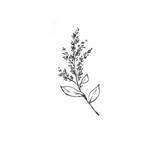 In her poetry, Sara explored topics that are relatable to many of us. She wrote about children growing up, parents aging and dying, seasons changing. She wrote about specific memories—a picture in her grandparents’ home, a stormy spring day in Illinois, hearing her own voice on a recording made years earlier. She wrote about self-doubt and self-worth, depression, anger over an abusive childhood. She even wrote a tribute to her beloved cowboy boots.
In her poetry, Sara explored topics that are relatable to many of us. She wrote about children growing up, parents aging and dying, seasons changing. She wrote about specific memories—a picture in her grandparents’ home, a stormy spring day in Illinois, hearing her own voice on a recording made years earlier. She wrote about self-doubt and self-worth, depression, anger over an abusive childhood. She even wrote a tribute to her beloved cowboy boots.During the process of selecting, organizing, lightly editing, and proofreading, I developed a relationship with her work. Certain phrases, images, cadences are now embedded in my mind—and they are every bit as useful and important as anything I’ve read in a college textbook or literary magazine. I feel fortunate that I had the opportunity to work so closely with Sara’s poems. Sara wrote poetry for more than 50 years, just for its own sake. And that’s enough.
With Pat’s permission, I am sharing some of the poems that I found especially meaningful.
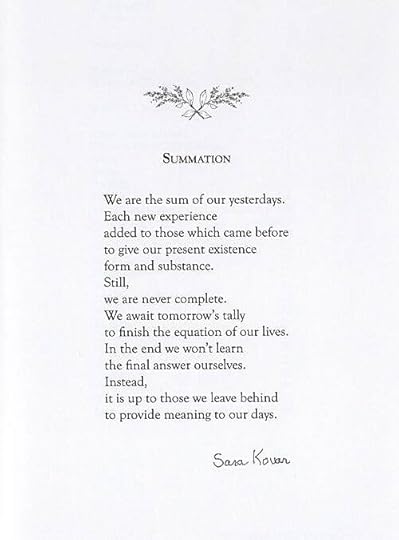 "Summation" is the opening poem and Pat's personal favorite. It's the poem that inspired him to put together this book. [image error]
"Summation" is the opening poem and Pat's personal favorite. It's the poem that inspired him to put together this book. [image error] Anyone who has lost a pet to old age or
a lingering illness will connect to the emotions in this poem.
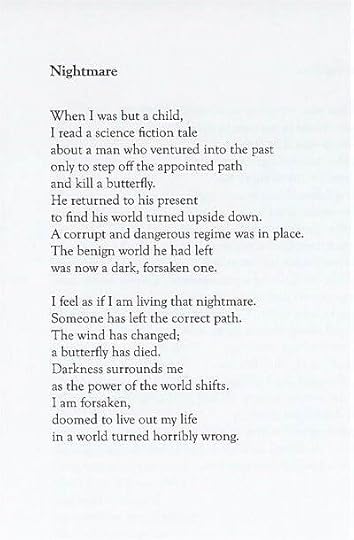 "Nightmare" is among the last poems Sara wrote. It captures what many of us have felt about our country in recent years. The wind has changed...
"Nightmare" is among the last poems Sara wrote. It captures what many of us have felt about our country in recent years. The wind has changed...The next poem, "We Will See Better Days, is as optimistic as "Nightmare" is bleak. It portrays a moment of hope inspired by a song. I think most of us have had that experience: a sudden surge of emotion brought on by hearing a particular song at a particular moment.
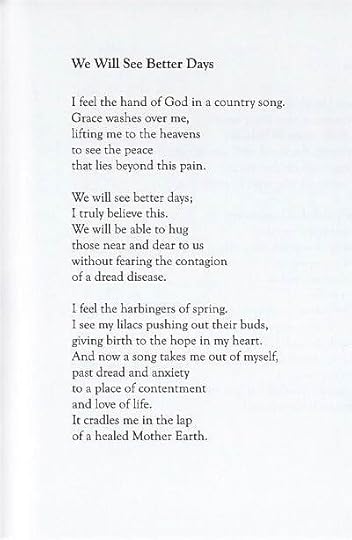
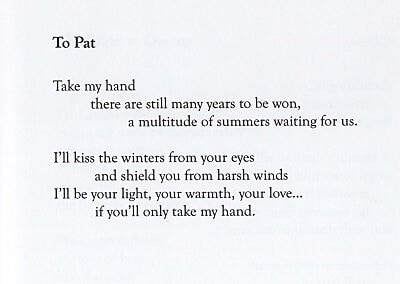
"I'll kiss the winters from your eyes..."
So beautiful. [image error]
Lilac Dreams is divided into three parts, and each part opens with a collage of pictures relating to the poems that follow. Design-wise, this made the book a lot more complicated (so many decisions!), but we thought readers would appreciate this personal connection to Sara.
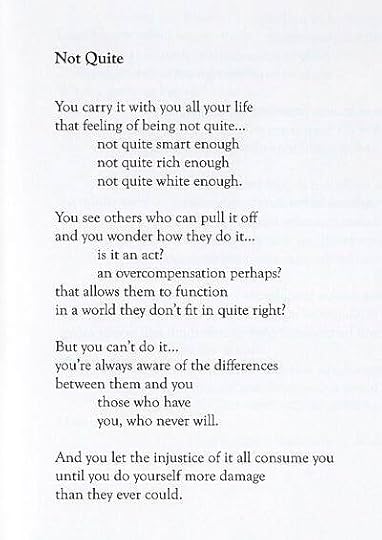
This one pulls back the curtain in a raw and powerful way. I wish I didn't relate to this poem so strongly, but I do.
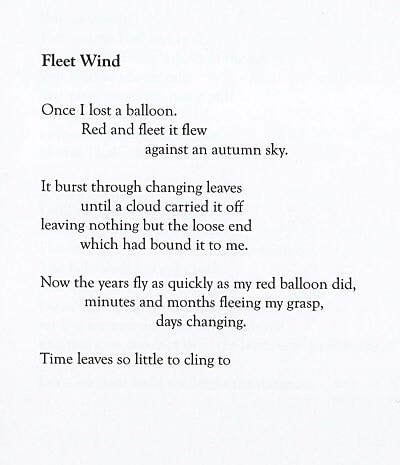
I love the simple, vivid imagery in this poem.
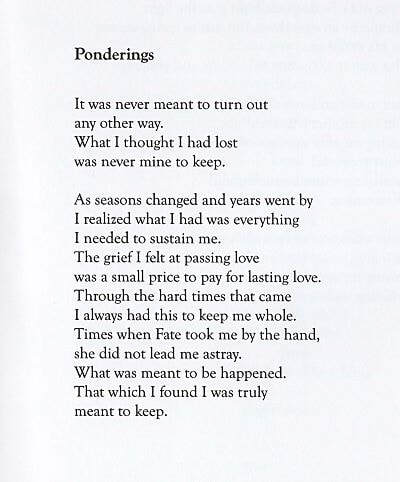
I've reached an age at which it's all too easy to look back and see all the things I did wrong. This poem offers acceptance and peace.
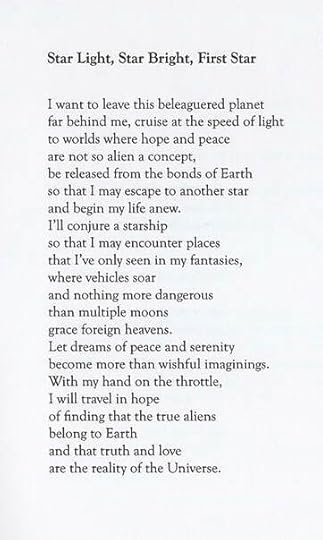
Sara was a science fiction fan. (One of the poems in Lilac Dreams is a tribute to Leonard Nimoy, who played Mr. Spock on Star Trek.) As soon as I read this poem, I knew I wanted it to be the closing poem in the book. I don't know if she intended it to be about life after death or if she was sharing a pleasant daydream about traveling in space, but I love the sense of freedom and adventure and hope she conveys.
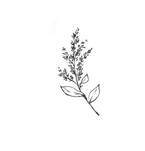 My sincere thanks to Pat Kovar for trusting me with this project.
My sincere thanks to Pat Kovar for trusting me with this project.In "Summation," Sara wrote, "It is up to those we leave behind to provide meaning to our days." It has been a privilege to help Pat do just that.
Published on September 04, 2021 07:12
May 8, 2021
Mother’s Day 1999
[image error]
This week I came across a short Mother’s Day piece I wrote 22 years ago,
when my kids were four and two. What I would give to relive this day!
The day was beautiful: blue skies, warm but breezy—a delight after nearly a week of cold, rainy weather. Bill hadn’t slept well the night before, so in the afternoon I took the kids out so he could nap. We went to the neighborhood park. Helena was unusually serene and content. Maybe sensing his opportunity, Louis was even more talkative than usual. When other kids approached, he introduced himself with lots of additional commentary:
I’m four.
I’m a big boy.
If a bad guy comes, I’ll punch him in the belly button.
Do you know, do you know I really love Godzilla. And I like the Rugrats too.
God’s got the whole world in his hands, right Mama?
“Do you always chatter so much?” one of the moms asked him.
Louis seems to think that the coincidence of being at a playground at the same time somehow forms a commitment between the participants. When it was time for us to leave, he said to the kids who just happened to be near him, “Well, bye, we’re coming right back, we’re going to the Dairy Queen and then we’re coming right back.” As if these other kids care. It almost breaks my heart, he can be so earnest.
Anyway, we did go to the Dairy Queen, then off to a different playground. Louis found a live worm and gently played with it. He wanted to take it home, but contented himself with giving it rides on the swing.
“I’m going to watch its antics,” he announced.
A father on a nearby bench smirked. Meanwhile Helena just swung happily.
Truthfully, I’ve never cared much for Mother’s Day. There’s something that rubs me the wrong way about being told whom to appreciate and when, and that I should expect appreciation myself. But on this day, I celebrated being a mother in my own way: blue skies, warm sand on bare toes, a little girl’s red hair blowing in the breeze, and a little boy digging a home for his new friend, the worm.
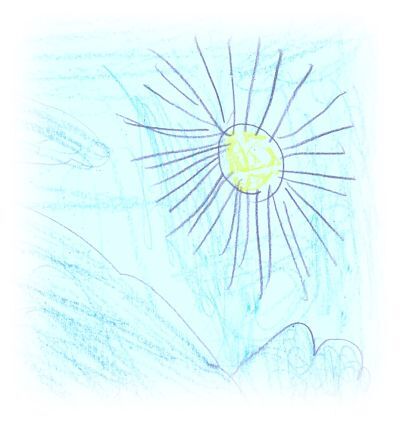
This week I came across a short Mother’s Day piece I wrote 22 years ago,
when my kids were four and two. What I would give to relive this day!
The day was beautiful: blue skies, warm but breezy—a delight after nearly a week of cold, rainy weather. Bill hadn’t slept well the night before, so in the afternoon I took the kids out so he could nap. We went to the neighborhood park. Helena was unusually serene and content. Maybe sensing his opportunity, Louis was even more talkative than usual. When other kids approached, he introduced himself with lots of additional commentary:
I’m four.
I’m a big boy.
If a bad guy comes, I’ll punch him in the belly button.
Do you know, do you know I really love Godzilla. And I like the Rugrats too.
God’s got the whole world in his hands, right Mama?
“Do you always chatter so much?” one of the moms asked him.
Louis seems to think that the coincidence of being at a playground at the same time somehow forms a commitment between the participants. When it was time for us to leave, he said to the kids who just happened to be near him, “Well, bye, we’re coming right back, we’re going to the Dairy Queen and then we’re coming right back.” As if these other kids care. It almost breaks my heart, he can be so earnest.
Anyway, we did go to the Dairy Queen, then off to a different playground. Louis found a live worm and gently played with it. He wanted to take it home, but contented himself with giving it rides on the swing.
“I’m going to watch its antics,” he announced.
A father on a nearby bench smirked. Meanwhile Helena just swung happily.
Truthfully, I’ve never cared much for Mother’s Day. There’s something that rubs me the wrong way about being told whom to appreciate and when, and that I should expect appreciation myself. But on this day, I celebrated being a mother in my own way: blue skies, warm sand on bare toes, a little girl’s red hair blowing in the breeze, and a little boy digging a home for his new friend, the worm.

Published on May 08, 2021 06:28
December 24, 2020
"God Keeps My Damaged Heart Beating"
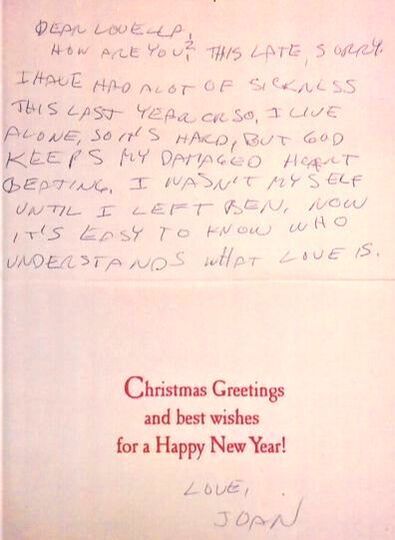
Years ago, after my elderly mother-in-law passed away and we were sorting her things, I came across this Christmas card. I couldn’t throw it away. I didn’t know who Joan was or how she knew my mother-in-law, but what I did know was that this woman had a story.
DEAR LOUELLA,
HOW ARE YOU? THIS IS LATE, SORRY. I HAVE HAD A LOT OF SICKNESS THIS LAST YEAR OR SO. I LIVE ALONE, SO IT'S HARD, BUT GOD KEEPS MY DAMAGED HEART BEATING. I WASN'T MYSELF UNTIL I LEFT BEN, NOW IT'S EASY TO KNOW WHO UNDERSTANDS WHAT LOVE IS.
LOVE,
JOAN
This short note has affected me as much as anything I have ever read. I’ve often thought that I should write about it, gently tug meaning out of it and piece together my reflections. But I’ve decided that there’s not anything to add. Joan was writing straight from her heart in a way few of us ever manage to do.
This holiday season, may God keep all our damaged hearts beating, may we truly be ourselves, and may we find others who understand what love is.
[image error]
Published on December 24, 2020 07:19
July 1, 2020
Black Lives - and Stories - Matter
It’s difficult for me to express my thoughts about the egregious racial injustices that are imbedded into our history, culture, and institutions. I don’t know where to start, and in this moment I would rather listen than try to make my own voice stand out.
But my silence isn’t acceptable, either. So for anyone who comes across my website or Facebook page, know this about me: I believe that Black Lives Matter. And to those who say “All Lives Matter,” let me gently suggest that you are missing the point. Please read this blog from parents.com—it offers some metaphors that are useful in understanding the issue. https://www.parents.com/kids/responsibility/racism/reasons-all-lives-matter-doesnt-work-in-terms-simple-enough-for-a-child/ One of my other fundamental beliefs is that stories matter. Stories allow us to make sense of the world, and always have. I want to share some books I’ve read in the last few years that have helped shape my own understanding of the challenges faced by people of color. These books weren’t part of any strategy or systematic approach—they are just books I happened to be drawn to at a particular moment. I highly recommend all of them.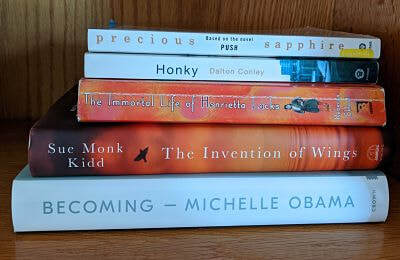 [image error]
Precious
[image error]
Precious
by Sapphire
This novel was first published under the title Push, but was reissued as Precious when the movie by that name came out in 2009. It is a harrowing account of an illiterate Black teenager in New York City who is abused in just about every way imaginable. The story is written in first person, stream-of-consciousness style. The book reads exactly like the narrator, Precious, would write it, with phonetic spellings and grammatical errors that improve somewhat as she slowly blossoms under the guidance of a gifted teacher. This is one of the bleakest books I’ve ever read—and also one of the most stirring. (The Kid is a sequel told from Precious’s son’s point of view.)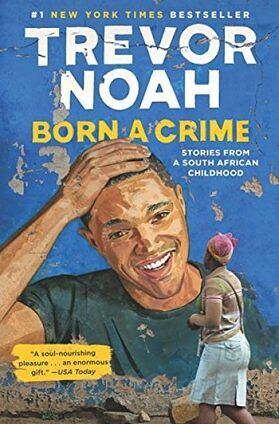 Born a Crime: Stories from
Born a Crime: Stories from
a South African Childhood
by Trevor Noah
Comedian Trevor Noah is way at the top of my most-admired-people list. I watch him on YouTube almost every day and was lucky enough to see him perform at Mystic Lake a couple of years ago. I depend on him to help me understand and tolerate these surreal times. Born a Crime is his memoir about growing up mixed-race in South Africa at the end of apartheid. I hesitated to read it at first because I’ve never particularly enjoyed books by comedians: what’s funny on stage often feels forced on the page, at least to me. But Born a Crime is exceptional. Noah is a natural storyteller and never lets his own facility with words get in the way of the truth.
A friend highly recommends the audio book, which Noah narrates himself. It might be just the thing to listen to on your summer walks or drives.
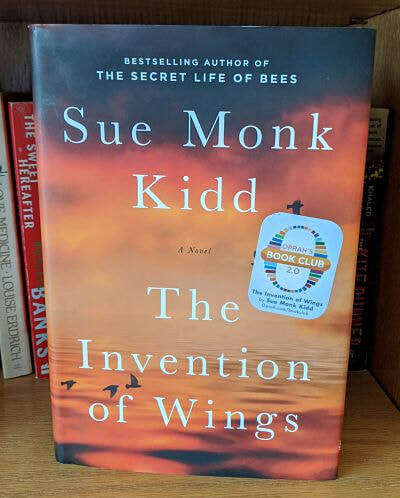 The Invention of Wings
The Invention of Wings
by Sue Monk Kidd
The Invention of Wings begins in Charleston, South Carolina, in 1803. A wealthy white girl, Sarah Grimke, is “given” a slave, ten-year-old Hetty, for her eleventh birthday. The story follows both of their lives for more than 30 years. The portrayal of Sarah and her sister, Angelina, is based on history (they were at the forefront of the abolition and women’s rights movements), while Hetty is fictional but every bit as believable.
I so appreciate well-written historical fiction. Facts and figures might not stay in my head for long, but I don't forget the way a book makes me feel.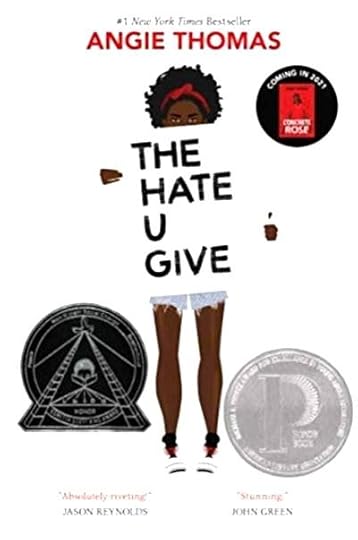 The Hate U Give
The Hate U Give
by Angie Thomas
This critically acclaimed YA novel is particularly timely. Starr is a Black teenage girl who has her feet in two worlds: the poor community where her family lives and the affluent, mostly white suburb where she attends private school. When she witnesses the police shoot and kill her best friend from childhood, the schism between those two worlds challenges her like never before. The book was made into a movie in 2018.
The novel started out as a short story that Thomas wrote in college in response to the police shooting of Oscar Grant in Oakland in 2009. I find that very moving—that a young writer would find her own voice as she expressed, in fiction, the voices of those who are too rarely heard.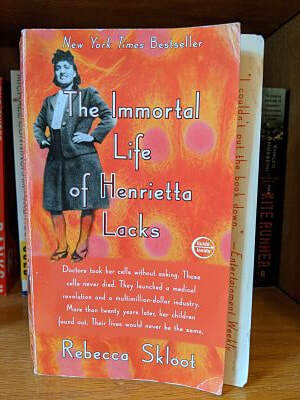 The Immortal Life of Henrietta Lacks
The Immortal Life of Henrietta Lacks
by Rebecca Skloot
Immortal Life got a lot of attention when it came out in 2010; it was made into a movie in 2017. It’s the true story of a Black woman whose cancer cells became an immortal cell line, used to this day by scientists around the world. It’s also about racism, discrimination, and the vast gap between medical ethics and the rapid advances of scientific technology. Skloot never sensationalizes, choosing at every turn to portray complexity and depth. The science is fascinating, the humanity humbling.
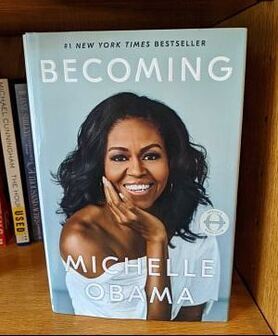 Becoming
Becoming
by Michelle Obama
Michelle Obama is also on my most-admired list. Is there anything she can’t do? And yet she’s never arrogant or boastful, just honest and real. I loved getting the behind-the-scenes look at events I myself remember, such as Barack Obama’s nomination, election, and inauguration.
I should add that the documentary of Becoming, released in May, is just as good as the book. I recently watched it with my mom as a special treat on my birthday.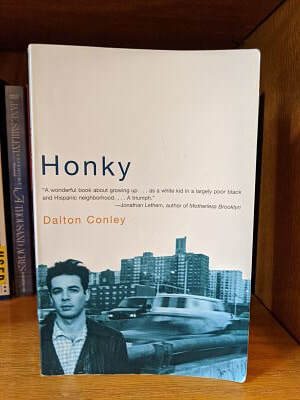 Honky
Honky
by Dalton Conley
This book may be less familiar than the others I’m discussing here, but even though it came out way back in 2001, I still think it deserves a large audience. Honky is Dalton Conley’s memoir about growing up white in a poor Black and and Puerto Rican neighborhood on Manhattan’s Lower East Side. It’s honest, insightful, funny, and revelatory. Conley is now a professor of sociology at Princeton; he’s written many other books and has a host of impressive academic designations.
Funny aside: I couldn’t remember where I’d gotten this book, but assumed it was from a Little Free Library or a library book sale. Just now I discovered a stamp that says “Perpich Center for Arts Education”—which is where my daughter went to high school. So evidently this is a school book she should have returned! Sorry, Perpich...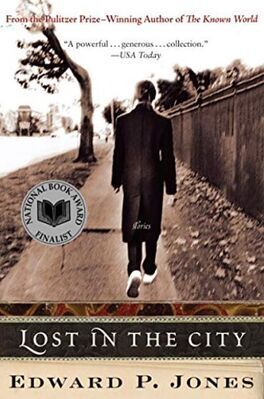 “The First Day”
“The First Day”
by Edward Jones
"The First Day" is a short story I’ve used several times in a creative writing class I teach at Hennepin Technical College. I think it is one of the most exquisite stories I’ve ever read. The narrator is a young Black girl who is starting kindergarten. On that important day, she realizes for the first time that her mother can’t read.
“The First Day” is from the story collection Lost in the City, published in 1992. Lost in the City was a National Book Award finalist and also won the Hemingway Foundation/PEN Award. Here's a link of Jones reading the story. There are many, many ways we can show our support for the change that needs to happen in our country. Reading books by and about Black Americans—and truly allowing ourselves to learn, to be transformed—is one of those ways. It’s important work. Let’s get busy.
But my silence isn’t acceptable, either. So for anyone who comes across my website or Facebook page, know this about me: I believe that Black Lives Matter. And to those who say “All Lives Matter,” let me gently suggest that you are missing the point. Please read this blog from parents.com—it offers some metaphors that are useful in understanding the issue. https://www.parents.com/kids/responsibility/racism/reasons-all-lives-matter-doesnt-work-in-terms-simple-enough-for-a-child/ One of my other fundamental beliefs is that stories matter. Stories allow us to make sense of the world, and always have. I want to share some books I’ve read in the last few years that have helped shape my own understanding of the challenges faced by people of color. These books weren’t part of any strategy or systematic approach—they are just books I happened to be drawn to at a particular moment. I highly recommend all of them.
 [image error]
Precious
[image error]
Precious
by Sapphire
This novel was first published under the title Push, but was reissued as Precious when the movie by that name came out in 2009. It is a harrowing account of an illiterate Black teenager in New York City who is abused in just about every way imaginable. The story is written in first person, stream-of-consciousness style. The book reads exactly like the narrator, Precious, would write it, with phonetic spellings and grammatical errors that improve somewhat as she slowly blossoms under the guidance of a gifted teacher. This is one of the bleakest books I’ve ever read—and also one of the most stirring. (The Kid is a sequel told from Precious’s son’s point of view.)
 Born a Crime: Stories from
Born a Crime: Stories froma South African Childhood
by Trevor Noah
Comedian Trevor Noah is way at the top of my most-admired-people list. I watch him on YouTube almost every day and was lucky enough to see him perform at Mystic Lake a couple of years ago. I depend on him to help me understand and tolerate these surreal times. Born a Crime is his memoir about growing up mixed-race in South Africa at the end of apartheid. I hesitated to read it at first because I’ve never particularly enjoyed books by comedians: what’s funny on stage often feels forced on the page, at least to me. But Born a Crime is exceptional. Noah is a natural storyteller and never lets his own facility with words get in the way of the truth.
A friend highly recommends the audio book, which Noah narrates himself. It might be just the thing to listen to on your summer walks or drives.
 The Invention of Wings
The Invention of Wings
by Sue Monk Kidd
The Invention of Wings begins in Charleston, South Carolina, in 1803. A wealthy white girl, Sarah Grimke, is “given” a slave, ten-year-old Hetty, for her eleventh birthday. The story follows both of their lives for more than 30 years. The portrayal of Sarah and her sister, Angelina, is based on history (they were at the forefront of the abolition and women’s rights movements), while Hetty is fictional but every bit as believable.
I so appreciate well-written historical fiction. Facts and figures might not stay in my head for long, but I don't forget the way a book makes me feel.
 The Hate U Give
The Hate U Give
by Angie Thomas
This critically acclaimed YA novel is particularly timely. Starr is a Black teenage girl who has her feet in two worlds: the poor community where her family lives and the affluent, mostly white suburb where she attends private school. When she witnesses the police shoot and kill her best friend from childhood, the schism between those two worlds challenges her like never before. The book was made into a movie in 2018.
The novel started out as a short story that Thomas wrote in college in response to the police shooting of Oscar Grant in Oakland in 2009. I find that very moving—that a young writer would find her own voice as she expressed, in fiction, the voices of those who are too rarely heard.
 The Immortal Life of Henrietta Lacks
The Immortal Life of Henrietta Lacks
by Rebecca Skloot
Immortal Life got a lot of attention when it came out in 2010; it was made into a movie in 2017. It’s the true story of a Black woman whose cancer cells became an immortal cell line, used to this day by scientists around the world. It’s also about racism, discrimination, and the vast gap between medical ethics and the rapid advances of scientific technology. Skloot never sensationalizes, choosing at every turn to portray complexity and depth. The science is fascinating, the humanity humbling.
 Becoming
Becoming
by Michelle Obama
Michelle Obama is also on my most-admired list. Is there anything she can’t do? And yet she’s never arrogant or boastful, just honest and real. I loved getting the behind-the-scenes look at events I myself remember, such as Barack Obama’s nomination, election, and inauguration.
I should add that the documentary of Becoming, released in May, is just as good as the book. I recently watched it with my mom as a special treat on my birthday.
 Honky
Honky by Dalton Conley
This book may be less familiar than the others I’m discussing here, but even though it came out way back in 2001, I still think it deserves a large audience. Honky is Dalton Conley’s memoir about growing up white in a poor Black and and Puerto Rican neighborhood on Manhattan’s Lower East Side. It’s honest, insightful, funny, and revelatory. Conley is now a professor of sociology at Princeton; he’s written many other books and has a host of impressive academic designations.
Funny aside: I couldn’t remember where I’d gotten this book, but assumed it was from a Little Free Library or a library book sale. Just now I discovered a stamp that says “Perpich Center for Arts Education”—which is where my daughter went to high school. So evidently this is a school book she should have returned! Sorry, Perpich...
 “The First Day”
“The First Day”by Edward Jones
"The First Day" is a short story I’ve used several times in a creative writing class I teach at Hennepin Technical College. I think it is one of the most exquisite stories I’ve ever read. The narrator is a young Black girl who is starting kindergarten. On that important day, she realizes for the first time that her mother can’t read.
“The First Day” is from the story collection Lost in the City, published in 1992. Lost in the City was a National Book Award finalist and also won the Hemingway Foundation/PEN Award. Here's a link of Jones reading the story. There are many, many ways we can show our support for the change that needs to happen in our country. Reading books by and about Black Americans—and truly allowing ourselves to learn, to be transformed—is one of those ways. It’s important work. Let’s get busy.
Published on July 01, 2020 07:30
May 23, 2020
Swinging at Carty Park: a Pandemic Memory
I have been irritable much of the day. I don’t enjoy the work I’m doing, and there is nothing to look forward to. It’s Good Friday, but there will be no family dinner on Easter Sunday, no dyed eggs or coconut cookies topped with jellybeans to resemble bird nests. Instead we’ll be trying our luck at our first-ever family video call. We are still in the early days of the pandemic, still groping our way through this miserable low-hanging fog that never burns off.
Around five o’clock, I sleep my computer and head out for a walk, listening to the Cowboy Junkies on my phone. Almost exactly a year ago, I sat 15 feet away from the Cowboy Junkies at a show at the Dakota in downtown Minneapolis. I look back at that night with a sense of disbelief: people crowded together, drinking and laughing and eating, nodding and tapping their toes to live music, with no reason to give any of it a second thought. On this bleak day, it’s like remembering a jewel: a flash of sapphire, the glow of ruby.
I haven’t lived in this area of St. Paul very long and am still getting to know the neighborhoods. To the south is Summit Avenue, lined with well-tended Victorian mansions. To the east is the Cathedral of Saint Paul, a behemoth of faith risen from the hills. Today I head north. Older two- and three-story homes give way to ramblers. Later I will learn that this is the old Rondo neighborhood—a thriving black community that was torn apart in the 1960s when government officials decided to route I-94 right through the middle of it.
The music in my ears does little to improve my mood. There are few walkers and even fewer cars. The absence of activity takes on a heavy presence of its own.
I come to Carty Park, which covers an entire square block. The last time I was here, maybe two weeks ago, a half dozen teenagers were hanging out in the usual way—voices loud, no masks, no six-foot spaces between them. But the hard truths of the pandemic have been sinking in. Today the park is entirely empty, except for one man who is walking his dog. He angles by me, stepping off the path to avoid getting too close. He won’t even make eye contact. I feel rebuked, unclean.
The path curves toward the swings, and it occurs to me that I could sit there for a bit. I’m not tired, but for some reason the idea of sitting on a swing is appealing. I will sit and sway and check my email.
As soon as my hips settle into the black rubber U, I feel it—the urge to swing. Swaying won’t do. Forget email. I will swing.
After a few pumps of my legs, Margo Timmins’s voice pours into my head:
Sing me a song about life in America
Sing me a song of love
I smile at the aptness of the lyrics even as tears come to my eyes. A love of country wells through me unlike any I’ve ever experienced. What will become of us?
Sing me a song about life in your neighborhood
Sing me a song of love
I pump harder, higher. Before me are unbudded trees and silent houses. But I am swinging. I am a 55-year-old woman swinging in the middle of an empty park during a pandemic.
Tell me a tale about those who are dear
Sing me a song of joy
I’m swinging as high as I can go now. My ears are cold and I feel dizzy, queasy. But never mind.
I know what will become of us.
We will swing.
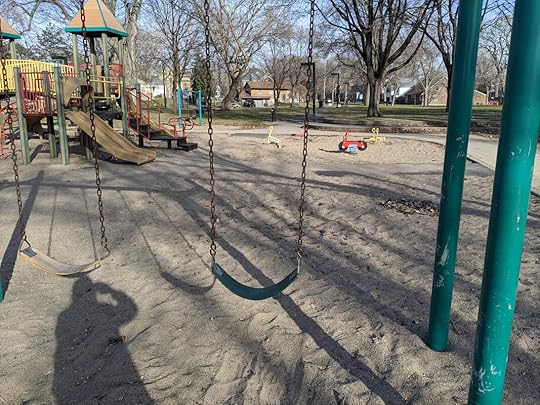
Published on May 23, 2020 22:00
April 23, 2020
Thank You Notes!
One of the best parts of writing for children is getting the opportunity to share my books—and my love of reading—with kids in person during school visits. That is definitely its own reward. But when I unexpectedly receive a large packet of thank you notes in the mail, it’s icing on the cake! That happened twice this winter. I find these notes touching, motivating, and sometimes amusing. Well worth saving and sharing! 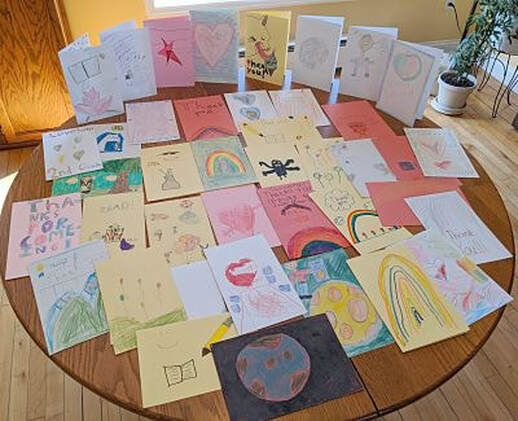 This first batch is from the second graders at Saint Mary’s Hall in San Antonio, Texas. (My visit was on January 15, 2020.) I did a writing workshop with this group. We talked a little about our amazing brains and then did several idea-generating activities. One of those activities was what I call "UN-meditating," in which kids simply put their heads down, close their eyes, and follow the trail of their thoughts. Instead of trying not to think, they consciously pay attention to whatever pops into their minds. And they might just come up with an idea they want to write about! It's simple and surprisingly effective, even with young kids.
This first batch is from the second graders at Saint Mary’s Hall in San Antonio, Texas. (My visit was on January 15, 2020.) I did a writing workshop with this group. We talked a little about our amazing brains and then did several idea-generating activities. One of those activities was what I call "UN-meditating," in which kids simply put their heads down, close their eyes, and follow the trail of their thoughts. Instead of trying not to think, they consciously pay attention to whatever pops into their minds. And they might just come up with an idea they want to write about! It's simple and surprisingly effective, even with young kids. 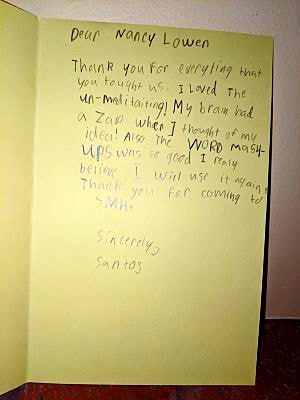 "I loved the un-meditating! My brain had a Zap when I thought of my idea!" [image error] "My favorite was un-meditating. That's because I really like peace and quiet."
"I loved the un-meditating! My brain had a Zap when I thought of my idea!" [image error] "My favorite was un-meditating. That's because I really like peace and quiet." 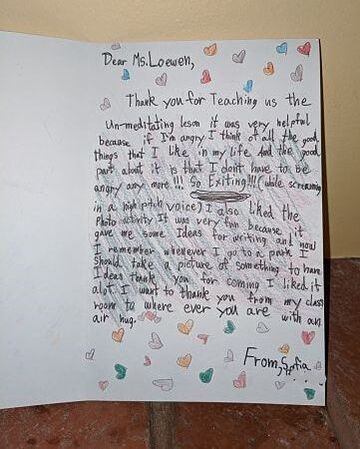 This one is from a young writer who already knows a thing or two about voice!
This one is from a young writer who already knows a thing or two about voice!
"Thank you for teaching us the un-meditating lesson it was very helpful because if I'm angry I think of all the good things that I like in my life. And the good part about it is that I don't have to be angry any more!!! So Exiting! (while screaming in a high pitch voice)."
She ends her letter with, "I want to thank you from my classroom to wherever you are with an air hug."
Sofia, wherever you are right now, I'm sending an air hug right back to you!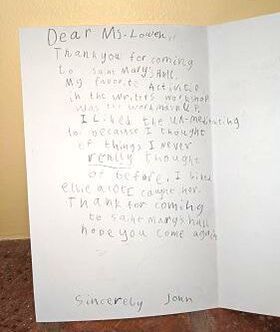 "I liked the un-meditating to because I thought of things I never really thought of before."
"I liked the un-meditating to because I thought of things I never really thought of before."
That emphasis on "really" is intriguing to me. In the space of a few minutes, this student went beneath the surface and into the zone of discovery. I would love to know what those thoughts were!
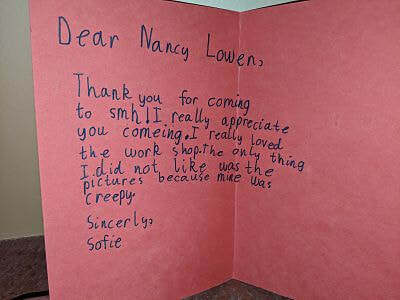 We did a similar activity involving pictures. The idea was not to describe the pictures but to see what ideas the pictures might spark. I handed out a variety of pictures from my own files, mostly photos of my weird figurines or cool things I've seen on walks. But "weird" and "cool" are in the eyes of the beholder, I guess!
We did a similar activity involving pictures. The idea was not to describe the pictures but to see what ideas the pictures might spark. I handed out a variety of pictures from my own files, mostly photos of my weird figurines or cool things I've seen on walks. But "weird" and "cool" are in the eyes of the beholder, I guess!
"I really loved the workshop. The only thing I did not like was the pictures because mine was creepy."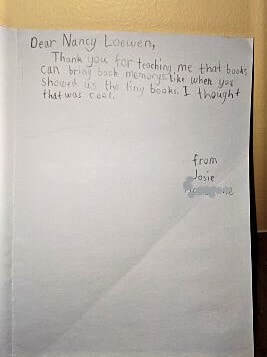 Some students wrote about the assembly instead of the workshop. I had shared a story about discovering some of my books from childhood decades later and still remembering them. I showed them the actual books and we all marveled at how tiny they were.
Some students wrote about the assembly instead of the workshop. I had shared a story about discovering some of my books from childhood decades later and still remembering them. I showed them the actual books and we all marveled at how tiny they were.
"Thank you for teaching me that books can bring back memorys like when you showed us the tiny books. I thought that was cool."
Look at that neat handwriting, the compact layout. Of course this student would be drawn to my tiny books. :)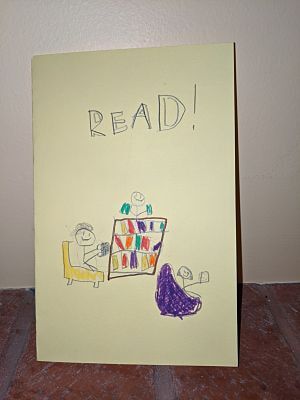 I suspect this student was also thinking about the assembly. I told them how my son used to stand in his crib and shake the rails, crying plaintively, "READ! READ!" And then I asked them to tell me to READ, READ, because I missed those days.
I suspect this student was also thinking about the assembly. I told them how my son used to stand in his crib and shake the rails, crying plaintively, "READ! READ!" And then I asked them to tell me to READ, READ, because I missed those days. 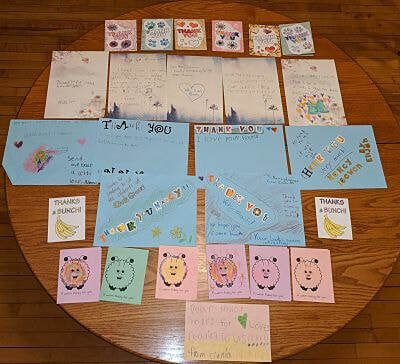
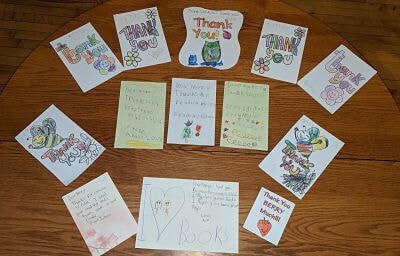 These cards are from students at Oak Grove Elementary in Bloomington, Minnesota.
These cards are from students at Oak Grove Elementary in Bloomington, Minnesota.
(I visited them on February 7, 2020.)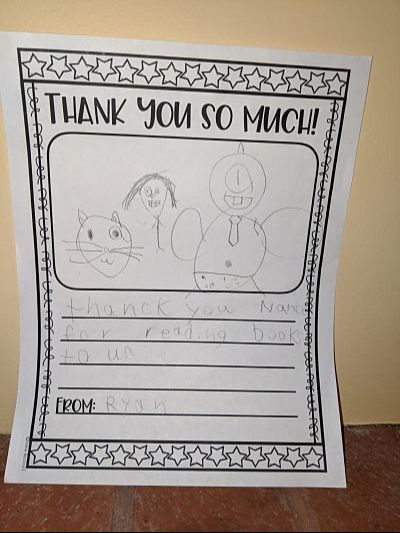 What I love about this one is the picture of the Cyclops—with a tie! I did read my Cyclops story (Cyclops Tells All: The Way EYE See It) to the older kids, but I don't think this student would have been in that group. So I'll bet this student was remembering what I said about the writing process. I showed the students a messy, handwritten page that was the first draft of the Cyclops story, and possibly I waved around the finished book for a bit to emphasize that those scribbles had turned into an actual book. So maybe that's what this child was thinking of! You just never know what will stick.
What I love about this one is the picture of the Cyclops—with a tie! I did read my Cyclops story (Cyclops Tells All: The Way EYE See It) to the older kids, but I don't think this student would have been in that group. So I'll bet this student was remembering what I said about the writing process. I showed the students a messy, handwritten page that was the first draft of the Cyclops story, and possibly I waved around the finished book for a bit to emphasize that those scribbles had turned into an actual book. So maybe that's what this child was thinking of! You just never know what will stick. 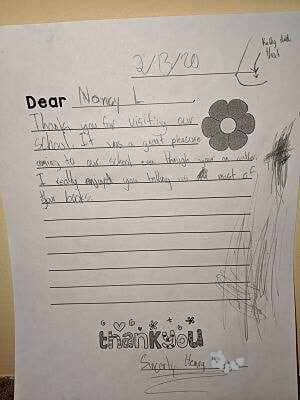 And then there are the letters that keep a person humble.
And then there are the letters that keep a person humble.
"Thank you for visiting our school. It was a great pleasure coming to our school even though your an author. I really enjoyed you telling us most of your books."
Even though [you're] an author...most of your books...this young writer is adept with qualifiers!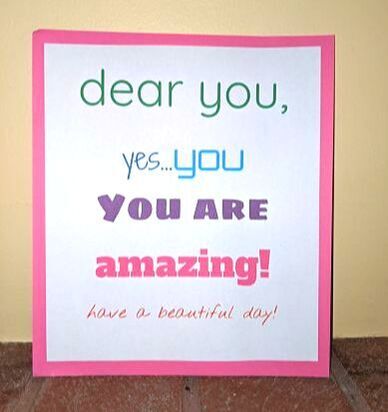 I am still puzzling over this one. It's the only card that wasn't handwritten. It's not signed. It doesn't say anything about my visit. It just...IS.
I am still puzzling over this one. It's the only card that wasn't handwritten. It's not signed. It doesn't say anything about my visit. It just...IS.
I'm keeping it on my fridge. Someone, somewhere, has wished me well, and I'm not about to take that for granted. :)
 This first batch is from the second graders at Saint Mary’s Hall in San Antonio, Texas. (My visit was on January 15, 2020.) I did a writing workshop with this group. We talked a little about our amazing brains and then did several idea-generating activities. One of those activities was what I call "UN-meditating," in which kids simply put their heads down, close their eyes, and follow the trail of their thoughts. Instead of trying not to think, they consciously pay attention to whatever pops into their minds. And they might just come up with an idea they want to write about! It's simple and surprisingly effective, even with young kids.
This first batch is from the second graders at Saint Mary’s Hall in San Antonio, Texas. (My visit was on January 15, 2020.) I did a writing workshop with this group. We talked a little about our amazing brains and then did several idea-generating activities. One of those activities was what I call "UN-meditating," in which kids simply put their heads down, close their eyes, and follow the trail of their thoughts. Instead of trying not to think, they consciously pay attention to whatever pops into their minds. And they might just come up with an idea they want to write about! It's simple and surprisingly effective, even with young kids.  "I loved the un-meditating! My brain had a Zap when I thought of my idea!" [image error] "My favorite was un-meditating. That's because I really like peace and quiet."
"I loved the un-meditating! My brain had a Zap when I thought of my idea!" [image error] "My favorite was un-meditating. That's because I really like peace and quiet."  This one is from a young writer who already knows a thing or two about voice!
This one is from a young writer who already knows a thing or two about voice! "Thank you for teaching us the un-meditating lesson it was very helpful because if I'm angry I think of all the good things that I like in my life. And the good part about it is that I don't have to be angry any more!!! So Exiting! (while screaming in a high pitch voice)."
She ends her letter with, "I want to thank you from my classroom to wherever you are with an air hug."
Sofia, wherever you are right now, I'm sending an air hug right back to you!
 "I liked the un-meditating to because I thought of things I never really thought of before."
"I liked the un-meditating to because I thought of things I never really thought of before."That emphasis on "really" is intriguing to me. In the space of a few minutes, this student went beneath the surface and into the zone of discovery. I would love to know what those thoughts were!
 We did a similar activity involving pictures. The idea was not to describe the pictures but to see what ideas the pictures might spark. I handed out a variety of pictures from my own files, mostly photos of my weird figurines or cool things I've seen on walks. But "weird" and "cool" are in the eyes of the beholder, I guess!
We did a similar activity involving pictures. The idea was not to describe the pictures but to see what ideas the pictures might spark. I handed out a variety of pictures from my own files, mostly photos of my weird figurines or cool things I've seen on walks. But "weird" and "cool" are in the eyes of the beholder, I guess!"I really loved the workshop. The only thing I did not like was the pictures because mine was creepy."
 Some students wrote about the assembly instead of the workshop. I had shared a story about discovering some of my books from childhood decades later and still remembering them. I showed them the actual books and we all marveled at how tiny they were.
Some students wrote about the assembly instead of the workshop. I had shared a story about discovering some of my books from childhood decades later and still remembering them. I showed them the actual books and we all marveled at how tiny they were. "Thank you for teaching me that books can bring back memorys like when you showed us the tiny books. I thought that was cool."
Look at that neat handwriting, the compact layout. Of course this student would be drawn to my tiny books. :)
 I suspect this student was also thinking about the assembly. I told them how my son used to stand in his crib and shake the rails, crying plaintively, "READ! READ!" And then I asked them to tell me to READ, READ, because I missed those days.
I suspect this student was also thinking about the assembly. I told them how my son used to stand in his crib and shake the rails, crying plaintively, "READ! READ!" And then I asked them to tell me to READ, READ, because I missed those days. 
 These cards are from students at Oak Grove Elementary in Bloomington, Minnesota.
These cards are from students at Oak Grove Elementary in Bloomington, Minnesota. (I visited them on February 7, 2020.)
 What I love about this one is the picture of the Cyclops—with a tie! I did read my Cyclops story (Cyclops Tells All: The Way EYE See It) to the older kids, but I don't think this student would have been in that group. So I'll bet this student was remembering what I said about the writing process. I showed the students a messy, handwritten page that was the first draft of the Cyclops story, and possibly I waved around the finished book for a bit to emphasize that those scribbles had turned into an actual book. So maybe that's what this child was thinking of! You just never know what will stick.
What I love about this one is the picture of the Cyclops—with a tie! I did read my Cyclops story (Cyclops Tells All: The Way EYE See It) to the older kids, but I don't think this student would have been in that group. So I'll bet this student was remembering what I said about the writing process. I showed the students a messy, handwritten page that was the first draft of the Cyclops story, and possibly I waved around the finished book for a bit to emphasize that those scribbles had turned into an actual book. So maybe that's what this child was thinking of! You just never know what will stick.  And then there are the letters that keep a person humble.
And then there are the letters that keep a person humble."Thank you for visiting our school. It was a great pleasure coming to our school even though your an author. I really enjoyed you telling us most of your books."
Even though [you're] an author...most of your books...this young writer is adept with qualifiers!
 I am still puzzling over this one. It's the only card that wasn't handwritten. It's not signed. It doesn't say anything about my visit. It just...IS.
I am still puzzling over this one. It's the only card that wasn't handwritten. It's not signed. It doesn't say anything about my visit. It just...IS. I'm keeping it on my fridge. Someone, somewhere, has wished me well, and I'm not about to take that for granted. :)
Published on April 23, 2020 06:14
April 20, 2019
A Bevy of Bunnies
Here's one way to celebrate spring: Bring out the bunnies!
Thanks to my friend Sandra for offering her yard (and for
taking the photos when I forgot to bring my phone).
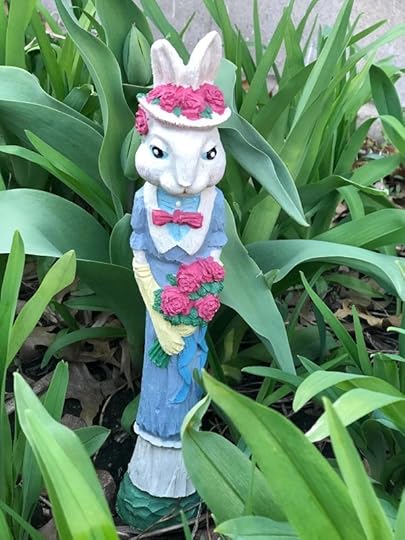
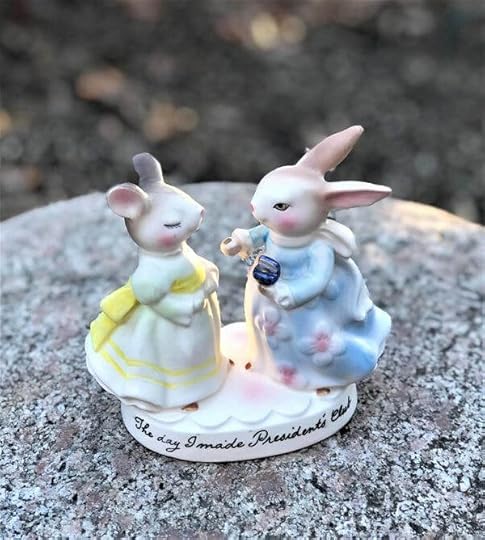 "The Day I Made President's Club." Hmmm...definitely a story here.
"The Day I Made President's Club." Hmmm...definitely a story here. 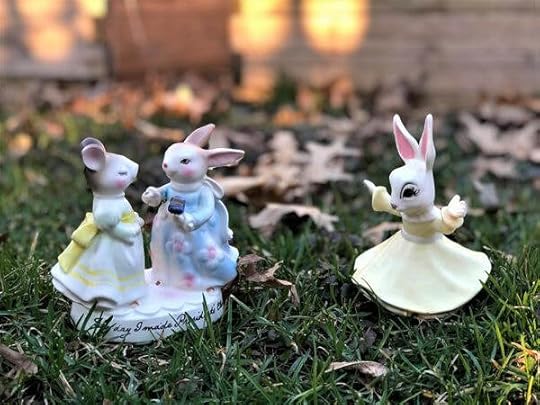
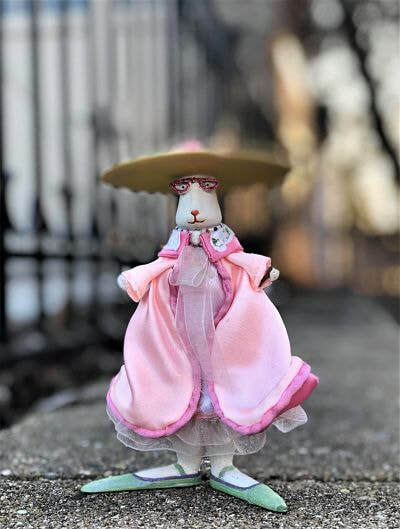 This bunny has lost her ears, but her feet and fancy threads more than make up for it.
This bunny has lost her ears, but her feet and fancy threads more than make up for it. 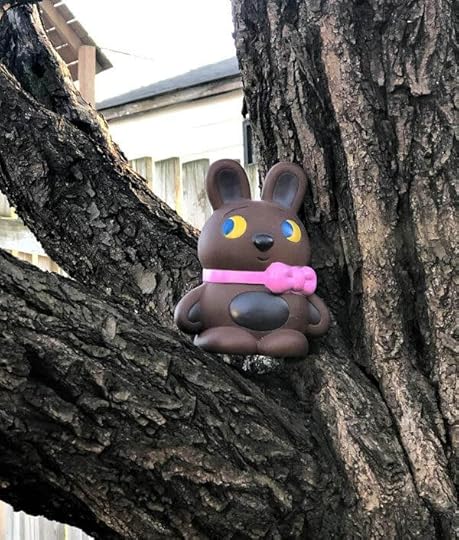
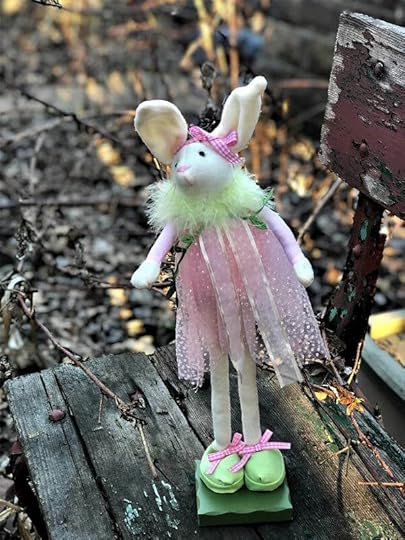
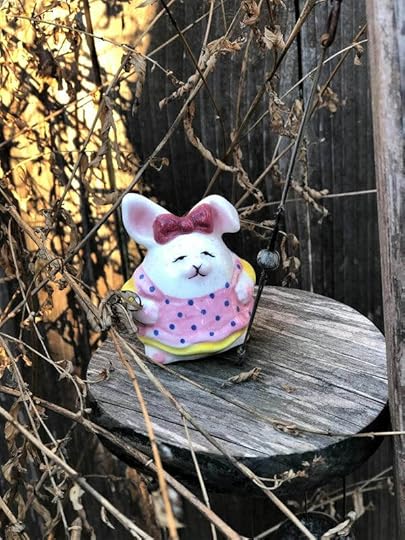
 Waiting for the REAL bunnies to show up!
Waiting for the REAL bunnies to show up!
Published on April 20, 2019 06:06
August 20, 2018
Tried-and-True Books for Preschoolers
I recently finished two years of service with Reading Corps, working with preschoolers at family child care sites. A key part of the curriculum was the Repeated Read Aloud, in which the tutors (or providers, depending on the day) read the same book every day for a week, focusing on different aspects at each reading. Over the two years I served, I estimate I read 39 books roughly 18 times, to five different groups of kids. Those are some high-mileage books! Here are my favorites: 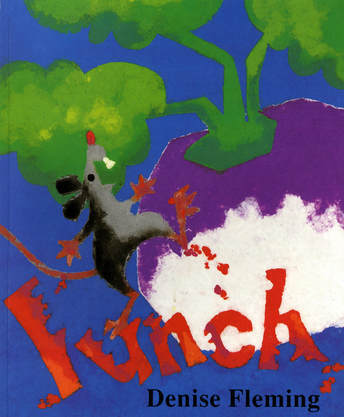
Lunch
written and illustrated
by Denise Fleming
Lunch is simple but brilliant. A hungry mouse slips out of his hole and devours a crisp white turnip, tasty orange carrots, sour purple grapes, and so on. Then he takes a nap…until dinner! Denise Fleming’s mouse has enough manic energy to keep readers entertained to the end. And since there’s a page turn between the color and the fruit or vegetable, kids get to test their knowledge and predictive powers. At the end, there’s a slight but oh-so-satisfying variation in the text: the mouse eats juicy pink watermelon, “crunchy black seeds and all.” Weeks after we read the book, one of my students noticed a picture of a watermelon on a rug and piped up, ”Look, a watermelon! With crunchy black seeds and all.” (THEME: food)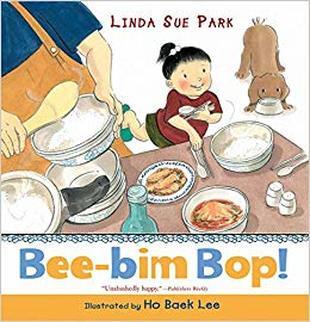
Bee-Bim Bop!
written by Linda Sue Park
illustrated by Ho Baek Lee This energetic book crackles like bacon in a frying pan. A family is making a Korean rice dish called bee-bim bop (“mixed-up rice”). From getting groceries to gathering at the table, every step is shared in fast-paced, spot-on rhyme. In the few minutes it takes to read the book out loud, you’ll work up an appetite! There’s a recipe in the back, and a couple of my child care providers had a fun time preparing it with their kids. That’s something I’d like to do, too. Hungry, very hungry for some bee-bim bop! (THEME: food)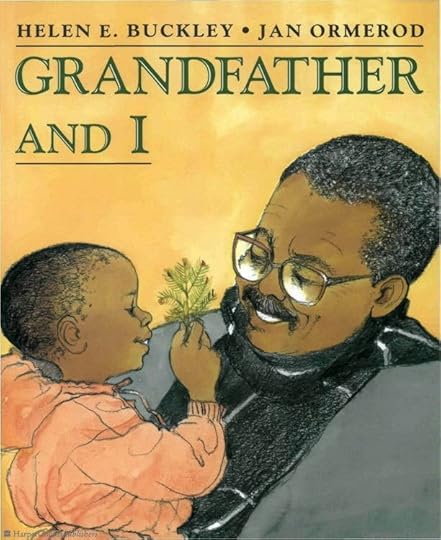
Grandfather and I
written by Helen E. Buckley
illustrated by Jan Ormerod
Kids need thoughtful, reflective books, too, and Grandfather and I is a wonderful choice. It tells the story of a child taking a slow walk in the woods with his grandfather. Scenes from the child’s busier, louder life are interspersed with scenes of nature. The refrain is calming: Grandfather and I never hurry. We walk along, and walk along, and stop…and look…just as long as we like. A recurring squirrel adds a welcome bit of playfulness. One of my students had intellectual disabilities and was very attached to this book. For kids and adults alike, Grandfather and I reminds us of how good it feels to step away from our overstimulating lives and just...be. (THEME: family)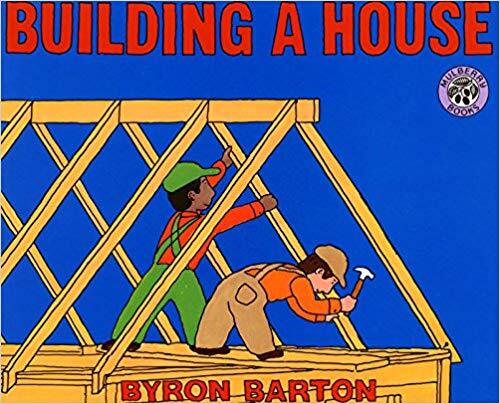
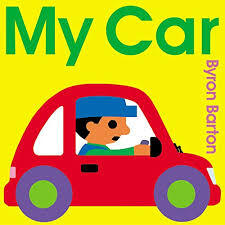
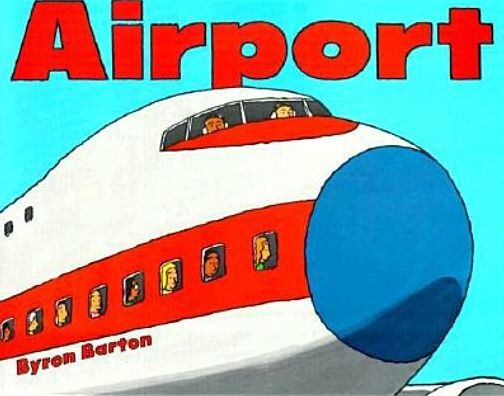 Building a House
Building a House
My Car
Airport
written and illustrated by Byron Barton We read three books by Byron Barton: Building a House, My Car, and Airport. The kids loved the name “Byron Barton” because it gave us the chance to sing our Alliteration Song. (Often when we were reading other books, I asked kids if they remembered the name of the author, and inevitably someone would say, “Byron Barton!”) This guy is a master at turning complicated subjects into simple, relatable sequences. The illustrations have little detail but are bold and bright. Some of the content is out of date by now and will require explanation, but don't let that be a deal breaker. These basic books are so effective because they give kids a powerful message: Yes, the world makes a certain kind of sense; and yes, they are capable of understanding it.
(THEMES: Building a House: Construction; My Car and Airport: Transportation)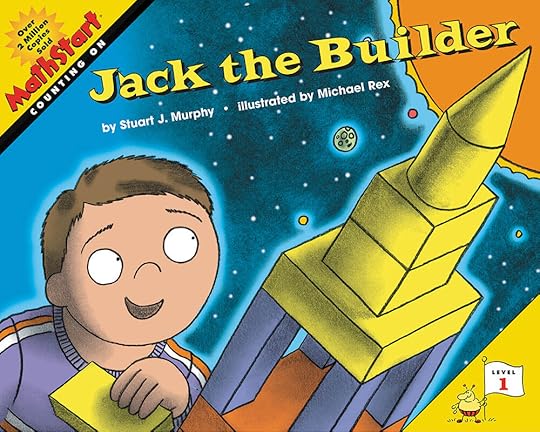
Jack the Builder
written by Stuart J. Murphy
illustrated by Michael Rex This one has a lot going in different areas, but it totally works. We watch as Jack builds with blocks and imagines elaborate scenes around what he is building: a robot, a hot dog stand, a ferry boat, a lookout tower, the tallest building in the world, and finally a rocket ship. With every new creation, we get to add a number of blocks to the ones already there, so kids can practice counting and addition. The pictures are detailed and silly, with lots of fun things to point out. Some favorites from my kids: tiny Jack holding a hot dog on the ferry; a giant octopus about to attack a fisherman in a boat; and a man flapping feathered wings by the lookout tower. (THEME: Construction)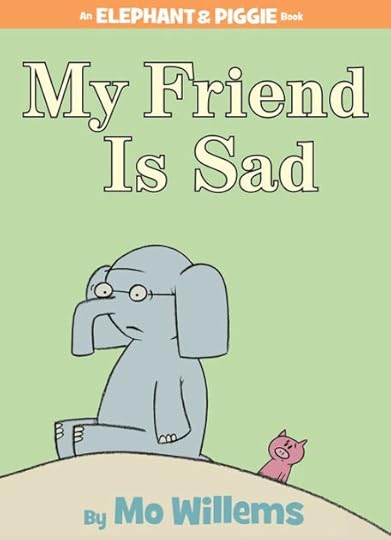
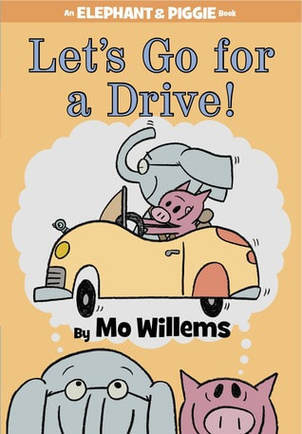 My Friend is Sad
My Friend is Sad
Let’s Go for a Drive
written and illustrated by Mo Willems Oh, Mo Willems. You just can’t go wrong with Mo Willems. In My Friend is Sad, Gerald is sad because he misses Piggy. But Piggy doesn’t know why Gerald is sad and tries to cheer him up, first by dressing as a cowboy, then a clown, and finally a robot. Each time, Gerald cheers up momentarily, then goes back to being sad. Why? Because he saw all those cool things and Piggy wasn’t there! The kids love Gerald’s over-the-top drama and Piggy’s imagination and sprightly persistence.
In Let’s Go for a Drive, Elephant and Piggy methodically gather all the things they’ll need for a drive—among them a map, sunglasses, umbrella, and suitcase—and then realize they are missing the critical item: a car. Gerald has a meltdown, of course, but Piggy’s solution is to use all the things they gathered for a game of Pirate.
If you can get another adult (or older child) to read with you, these books make great readers’ theater. In fact, later in the week, when the kids were familiar with the story, I’d divide the kids into a Gerald group and a Piggy group and we’d read the story together that way. It’s all great fun—but there’s more to it than fun, I think. There is such a range of emotion in these books, with lots of opportunities to talk about how characters are feeling and why. And for me, it was eye-opening to see how even my youngest students reveled in the fairly sophisticated humor. Kids understand so much more than we realize!
(THEMES: My Friend is Sad: Friends; Let's Go for a Drive: Transportation)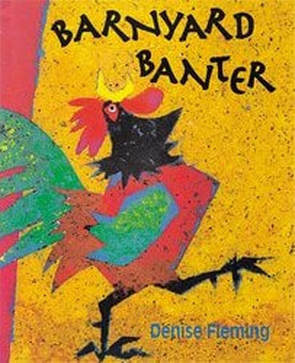
Barnyard Banter
written and illustrated
by Denise Fleming Another vivid, energetic winner by Denise Fleming (author/illustrator of Lunch). This one is a romp through a farm, showing animals and the places they hang out and celebrating animal sounds in a big way. Throughout the book, Goose is chasing a butterfly. Even though Goose is usually easy to spot, the kids loved pointing him out and seeing how close he could get to that butterfly. A couple of my younger kids got so excited they’d run to the book and practically shout, “There’s Goose!”. There’s lots of fun rhyme, too, and the chance to introduce some less common vocabulary words (grain bin, rafters, etc.). Once the kids are familiar with the book, an easy confidence-building activity is to say an animal sound and let the kids guess which animal is making it, or name the animal and have the kids say the sound. This is a noisy one! (THEME: Animals)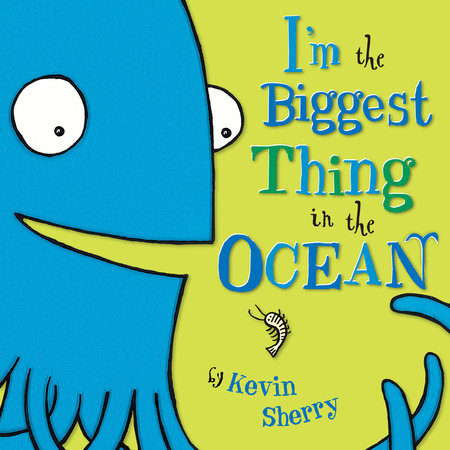
I'm the Biggest Thing in the Ocean
written and illustrated by Kevin Sherry
In this silly book, a giant squid is very taken with himself and the fact that he’s bigger than all the other sea creatures he comes across. Then a whale sneaks up on him—and next thing he knows, he’s in the belly of the whale, along with all the creatures who’ve had to put up with his bragging. The squid thinks about it for a bit and then, undaunted, declares himself to be the biggest thing in the whale! The book offers good exposure to sea animal vocabulary (although I do wish there had been a fun fact section at the end, to give a little more content). One of my younger kids was scared of the shark, and a few kids didn’t like the picture of the whale swimming away with the squid’s tentacles streaming out of its mouth. But I think their responses just made the other kids like the book more. Even children appreciate a little dark humor at times. (THEME: Animals)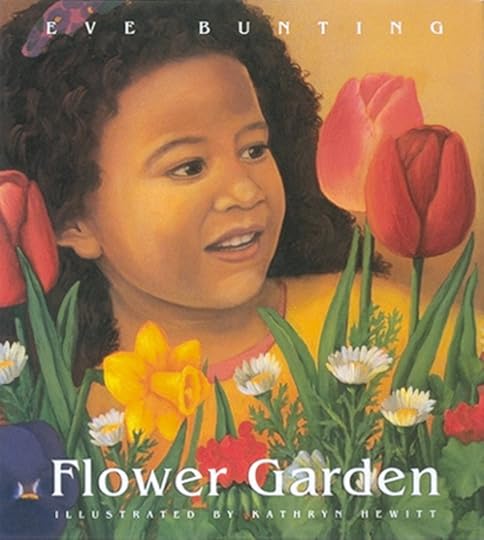
Flower Garden
written by Eve Bunting
illustrated by Kathryn Hewitt Flower Garden was published in 1994, and it makes me happy to think that over the years, so many children have experienced this book. It is pure loveliness. A girl and her father surprise the mom on her birthday by planting a garden box and hanging it in their apartment window. The text rhymes gently and the illustrations convey a variety of interesting perspectives. One of our favorite pictures showed only the girl’s feet and legs as she went up the stairs, a cat looking up at her and a fallen geranium blossom on a step. (Several kids insisted this was a strawberry.) Another favorite was a scene with the girl looking out the window and seeing her mother on the street below, just turning the corner. At the end, the family looks out the window; the newly planted flowers are framed against the city skyline; chocolate ice cream melts on a plate. I could just about taste that ice cream. This is a book that glows. (THEME: Spring)

Lunch
written and illustrated
by Denise Fleming
Lunch is simple but brilliant. A hungry mouse slips out of his hole and devours a crisp white turnip, tasty orange carrots, sour purple grapes, and so on. Then he takes a nap…until dinner! Denise Fleming’s mouse has enough manic energy to keep readers entertained to the end. And since there’s a page turn between the color and the fruit or vegetable, kids get to test their knowledge and predictive powers. At the end, there’s a slight but oh-so-satisfying variation in the text: the mouse eats juicy pink watermelon, “crunchy black seeds and all.” Weeks after we read the book, one of my students noticed a picture of a watermelon on a rug and piped up, ”Look, a watermelon! With crunchy black seeds and all.” (THEME: food)

Bee-Bim Bop!
written by Linda Sue Park
illustrated by Ho Baek Lee This energetic book crackles like bacon in a frying pan. A family is making a Korean rice dish called bee-bim bop (“mixed-up rice”). From getting groceries to gathering at the table, every step is shared in fast-paced, spot-on rhyme. In the few minutes it takes to read the book out loud, you’ll work up an appetite! There’s a recipe in the back, and a couple of my child care providers had a fun time preparing it with their kids. That’s something I’d like to do, too. Hungry, very hungry for some bee-bim bop! (THEME: food)

Grandfather and I
written by Helen E. Buckley
illustrated by Jan Ormerod
Kids need thoughtful, reflective books, too, and Grandfather and I is a wonderful choice. It tells the story of a child taking a slow walk in the woods with his grandfather. Scenes from the child’s busier, louder life are interspersed with scenes of nature. The refrain is calming: Grandfather and I never hurry. We walk along, and walk along, and stop…and look…just as long as we like. A recurring squirrel adds a welcome bit of playfulness. One of my students had intellectual disabilities and was very attached to this book. For kids and adults alike, Grandfather and I reminds us of how good it feels to step away from our overstimulating lives and just...be. (THEME: family)


 Building a House
Building a HouseMy Car
Airport
written and illustrated by Byron Barton We read three books by Byron Barton: Building a House, My Car, and Airport. The kids loved the name “Byron Barton” because it gave us the chance to sing our Alliteration Song. (Often when we were reading other books, I asked kids if they remembered the name of the author, and inevitably someone would say, “Byron Barton!”) This guy is a master at turning complicated subjects into simple, relatable sequences. The illustrations have little detail but are bold and bright. Some of the content is out of date by now and will require explanation, but don't let that be a deal breaker. These basic books are so effective because they give kids a powerful message: Yes, the world makes a certain kind of sense; and yes, they are capable of understanding it.
(THEMES: Building a House: Construction; My Car and Airport: Transportation)

Jack the Builder
written by Stuart J. Murphy
illustrated by Michael Rex This one has a lot going in different areas, but it totally works. We watch as Jack builds with blocks and imagines elaborate scenes around what he is building: a robot, a hot dog stand, a ferry boat, a lookout tower, the tallest building in the world, and finally a rocket ship. With every new creation, we get to add a number of blocks to the ones already there, so kids can practice counting and addition. The pictures are detailed and silly, with lots of fun things to point out. Some favorites from my kids: tiny Jack holding a hot dog on the ferry; a giant octopus about to attack a fisherman in a boat; and a man flapping feathered wings by the lookout tower. (THEME: Construction)

 My Friend is Sad
My Friend is SadLet’s Go for a Drive
written and illustrated by Mo Willems Oh, Mo Willems. You just can’t go wrong with Mo Willems. In My Friend is Sad, Gerald is sad because he misses Piggy. But Piggy doesn’t know why Gerald is sad and tries to cheer him up, first by dressing as a cowboy, then a clown, and finally a robot. Each time, Gerald cheers up momentarily, then goes back to being sad. Why? Because he saw all those cool things and Piggy wasn’t there! The kids love Gerald’s over-the-top drama and Piggy’s imagination and sprightly persistence.
In Let’s Go for a Drive, Elephant and Piggy methodically gather all the things they’ll need for a drive—among them a map, sunglasses, umbrella, and suitcase—and then realize they are missing the critical item: a car. Gerald has a meltdown, of course, but Piggy’s solution is to use all the things they gathered for a game of Pirate.
If you can get another adult (or older child) to read with you, these books make great readers’ theater. In fact, later in the week, when the kids were familiar with the story, I’d divide the kids into a Gerald group and a Piggy group and we’d read the story together that way. It’s all great fun—but there’s more to it than fun, I think. There is such a range of emotion in these books, with lots of opportunities to talk about how characters are feeling and why. And for me, it was eye-opening to see how even my youngest students reveled in the fairly sophisticated humor. Kids understand so much more than we realize!
(THEMES: My Friend is Sad: Friends; Let's Go for a Drive: Transportation)

Barnyard Banter
written and illustrated
by Denise Fleming Another vivid, energetic winner by Denise Fleming (author/illustrator of Lunch). This one is a romp through a farm, showing animals and the places they hang out and celebrating animal sounds in a big way. Throughout the book, Goose is chasing a butterfly. Even though Goose is usually easy to spot, the kids loved pointing him out and seeing how close he could get to that butterfly. A couple of my younger kids got so excited they’d run to the book and practically shout, “There’s Goose!”. There’s lots of fun rhyme, too, and the chance to introduce some less common vocabulary words (grain bin, rafters, etc.). Once the kids are familiar with the book, an easy confidence-building activity is to say an animal sound and let the kids guess which animal is making it, or name the animal and have the kids say the sound. This is a noisy one! (THEME: Animals)

I'm the Biggest Thing in the Ocean
written and illustrated by Kevin Sherry
In this silly book, a giant squid is very taken with himself and the fact that he’s bigger than all the other sea creatures he comes across. Then a whale sneaks up on him—and next thing he knows, he’s in the belly of the whale, along with all the creatures who’ve had to put up with his bragging. The squid thinks about it for a bit and then, undaunted, declares himself to be the biggest thing in the whale! The book offers good exposure to sea animal vocabulary (although I do wish there had been a fun fact section at the end, to give a little more content). One of my younger kids was scared of the shark, and a few kids didn’t like the picture of the whale swimming away with the squid’s tentacles streaming out of its mouth. But I think their responses just made the other kids like the book more. Even children appreciate a little dark humor at times. (THEME: Animals)

Flower Garden
written by Eve Bunting
illustrated by Kathryn Hewitt Flower Garden was published in 1994, and it makes me happy to think that over the years, so many children have experienced this book. It is pure loveliness. A girl and her father surprise the mom on her birthday by planting a garden box and hanging it in their apartment window. The text rhymes gently and the illustrations convey a variety of interesting perspectives. One of our favorite pictures showed only the girl’s feet and legs as she went up the stairs, a cat looking up at her and a fallen geranium blossom on a step. (Several kids insisted this was a strawberry.) Another favorite was a scene with the girl looking out the window and seeing her mother on the street below, just turning the corner. At the end, the family looks out the window; the newly planted flowers are framed against the city skyline; chocolate ice cream melts on a plate. I could just about taste that ice cream. This is a book that glows. (THEME: Spring)
Published on August 20, 2018 09:10
June 1, 2018
Question Session
In mid-May I was a presenter at the Young Authors, Young Artists conference in Rochester, Minnesota. My workshop was called The Question Session: Q & A Your Way to Great Writing. Over the course of three days, I worked with close to 270 kids in grades 3 to 5. I thought I’d share the highlights—and a few lowlights—of what it was like.
The gist of the class: Questions are a simple, effective tool that can help us enrich our writing. To get the ball rolling, instead of introducing myself in the usual way, I had the kids ask me questions. I told them they could ask me anything, serious or silly. They didn’t go for the silly questions the way I expected, but they did seem to appreciate the go-ahead to ask personal questions. What’s your shoe size?
How old are you?
Do you color your hair?
Have you ever played a video game?
Are you a good cook?
Why did you wear that outfit? (That one had me worried.)
Are you married? (Maybe I imagined this, but the kids seemed a little taken aback by my answer. I told them that I had been married for a long time, but wasn’t anymore.)
One scheming boy asked me how far away the Earth was from the Sun. Luckily that’s one fact that will never leave my brain.
And in every single session I was asked about my favorite color and if I had pets. It makes sense. Kids know when their odds are good at having something in common with the teacher. [image error] We talked about how questions help us access different types of information in our brains. The kids picked a writing prompt question (or made up their own) and wrote a quick first draft. Then we took a short break, which was also question-themed, of course. Everyone stood up and I asked a bunch of yes-and-no questions. For a “yes” we jumped twice; for a “no” we touched our toes. My questions ran the gamut. I learned that: almost every kid had bought something at a garage sale; only a few had broken a bone; about half of them liked pickles; about a third currently had a crush on someone; most could use chopsticks; and the vast majority had a secret. I was happy with how well this exercise went—the kids seemed to enjoy it and were sorry when the game was over. And yet it was so simple. (Witness the power of questions!)
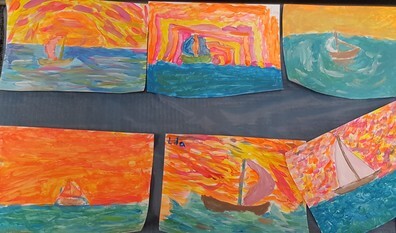 The hall outside my room was aglow with sunset paintings by artists in the room next to mine. Before heading into second drafts, we talked about several categories of questions and did a group exercise to practice. One boy revealed that he’d once had a container of pineapple explode in his backpack. (That sounds like something that would have happened to my daughter.)
The hall outside my room was aglow with sunset paintings by artists in the room next to mine. Before heading into second drafts, we talked about several categories of questions and did a group exercise to practice. One boy revealed that he’d once had a container of pineapple explode in his backpack. (That sounds like something that would have happened to my daughter.) At the end the kids could share their work if they wanted to. Many of them read work based on the question If you had a bazillion dollars, what would you spend it on? Every single child who had chosen that prompt talked about using the money to help people. Every single one. But you could tell that the older kids, the 5th graders, were already worried about college. Several of them said that after giving money to charity and buying some cool stuff for themselves and their families, they would put money aside for their college educations. So yes, even with a bazillion dollars and no need to have a job at all, the kids believed they should go to college—and they knew it would cost a lot of money.
Another popular prompt was If you could have any animal in the whole world as a pet, what would it be? One girl approached me as the kids were starting their first drafts.
“Can I create my own animal?” she whispered. “Sure!” I said.
When it was time to write second drafts, she came up to me again. “I made up an animal. Can I write from the animal’s perspective?”
“Of course you can!” I told her. “What a great idea!” Her face brightened. I’m sure mine did too. This is the power of creative writing: You get to say YES.
But sometimes saying YES comes with a price. An older girl chose the prompt What’s the hardest thing you’ve ever done?. She talked about how hard it was that she hadn’t seen her dad in three years.
I really hope that girl keeps writing. A few kids gave me pictures or notes, or even the drafts of their work. The boy who wrote the note to the right has a bright future as a writer AND politician, for sure.
Another boy told me he’d learned more from my class than from his English teacher. But that might have been because I gave out candy bars at the end. They were meant to reinforce a metaphor we’d talked about in class, but a candy bar is a candy bar. (Not my first time around the block.)
And a teacher stopped by my room and told me that she loved my books, especially the Writer’s Toolbox series. She was a science teacher who’d been asked to teach writing and wasn’t crazy about the idea, but she was inspired by my books.
I totally savored these feel-good moments, but life being what it is, they were accompanied by a major reality check. My prompts included the question What’s the best (or worse) birthday you ever had? A girl volunteered that it was her birthday that very day. And she was having her worst birthday ever. Right there, in my session, she was having her worst birthday ever. “It’s kind of a blah day,” she explained with a shrug. “Just so-so.” (We sang for her anyway.)
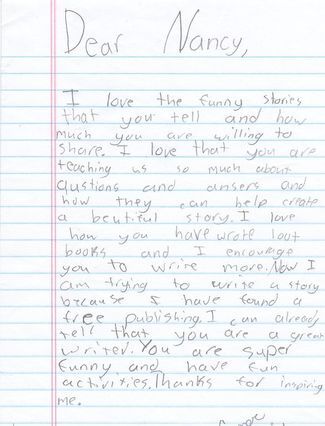
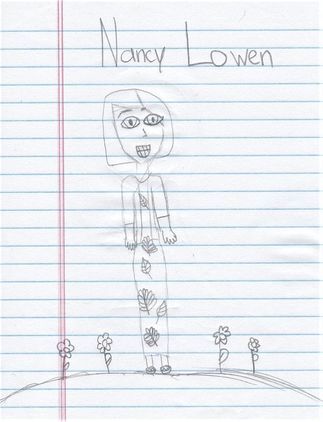 [image error] Another girl also chose that prompt and asked me to read her piece. I tried my best, but I couldn't make out all of it. One critical plot point came through loud and clear, though: Someone threw up on someone else’s birthday presents. Now THAT is a bad birthday!
[image error] Another girl also chose that prompt and asked me to read her piece. I tried my best, but I couldn't make out all of it. One critical plot point came through loud and clear, though: Someone threw up on someone else’s birthday presents. Now THAT is a bad birthday! And what was my favorite part of the conference? The funny stories, the affirmations that provide much-needed encouragement? No. What I enjoyed most was the sound of pencils sliding busily over paper.
Because in that sound is everything.
[image error]
Published on June 01, 2018 02:50



